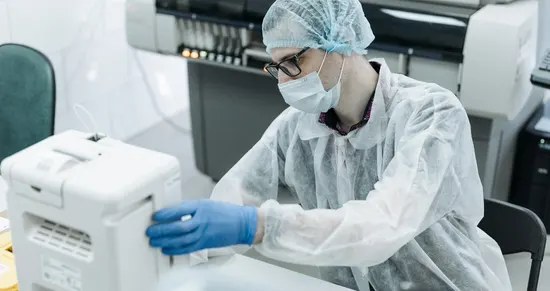INTRODUCTION
Before placing a device on the market, manufacturers are required to undertake an assessment of the conformity of that device, in accordance with the applicable conformity assessment procedures set out in Annexes IX to XI of (EU) 2017/745 Medical Devices Regulation (MDR). Subject to classification and conformity assessment route chosen, devices of classification IIa and higher will need their Technical Documentation assessed by the Notified Body.
THE TECHNICAL DOCUMENTATION
EU MDR is a new legislation and for initial approvals, a complete submission with all the relevant Technical Documentation included is required even if the device was previously certified under the EU MDD.
Recommended For You:
Reasons for delays in Technical Documentation reviews are:
- Incomplete Submissions – Notified Body (NB) has not been provided with all the information needed for the review.
- Poor structuring of Technical Documentation – The information is present within the Technical Documentation but is difficult to locate.
Recommended For You:
SUBMISSION PROCESS:
-First filled application form along with the documents required.
-After accepting the form notified body will assign the reviewer.
-The conformity assessment of the Technical Documentation review can begin upon receipt of a signed quote together with required application documentation (per Annex IX for initial submissions).
-The conformity assessment of the Technical Documentation review can begin upon receipt of a signed quote together with required application documentation (per Annex IX for initial submissions).
Prior to starting the implementation phase, you should put a plan in place. The steps below will guide you through the main topics.
- Safety and performance checklist: Our general safety and performance checklist stores the complete requirements of EU MDR annex 1..
- Technical File: Technical file update according to the EU MDR requirements.
- Risk management according to ISO 14971: Your risk management activities (plan, analysis, and report) should be aligned with your Post Market Surveillance (PMS) and PMCF activities.
- UDI System: Each medical device needs a UDI-DI (Unique Device Identification – Device Identifier) and UDI-PI (Unique Device Identification – Production Identifier) and must be submitted and transferred to the UDI database. (See document from the EU Commission) 4.9 EUDAMED registration: Currently, the EUDAMED is not online but a first FUNCTIONAL SPECIFICATION version is available. The initial release will be March 2020. Any changes to the release date will be communicated with our Regulatory Intelligence Paper.
- Common Specifications: Take care about upcoming specification updates. We keep you informed with our Regulatory Intelligence Paper. Furthermore, this paper helps to address regulatory activities according to ISO 13485:2016, Chapter 5.6 Management Review.
- Post Market Surveillance (PMS): Post Market Surveillance is defined in chapter VII of the EU MDR.
- Post Market Clinical Follow-Up (PMCF): Manufacturers shall conduct a clinical evaluation in accordance with the requirements set out in Article 61 and Annex XIV, including a PMCF.
- Clinical Evaluation: According to MEDDEV 2.7.1 Rev.4.
- Labelling: Manufacturers shall ensure that the device is accompanied by the information set out in Section 23 of Annex I in an official Union language(s) determined by the Member State.
Recommended For You:
ADDITIONAL TOPICS TO CONSIDER WHEN PREPARING TECHNICAL DOCUMENTATION FOR SUBMISSION:
Optical Character Recognition (searchable format): Manufacturers scanning directly from printed pages should utilize Optical Character Recognition (OCR) so that as much of the resultant PDF file is searchable as possible.
Manufacturer personnel support: The more quickly information can be provided, the more quickly questions can be closed to progress towards certification.
Document availability: If a document includes hyperlinks or cross-references to other documents or embedded documents, ensure that these are functional, and all the documents are available.
Languages: As part of the quality system, or of the documents defining the manufacturing process, the manufacturer should have procedures for ensuring accurate translation of labelling, instructions for use, product claims in marketing materials, SSCPs etc. These are especially important for user instructions where the safety and claimed performance of the device may be compromised through inadequate translation or the SSCPs where inaccurate information may be presented to the end-users or patients through inadequate translation.
Certificate scope: Sometimes the addition of new products, or even changes to existing products, can affect the scope of the associated Quality System certificate (e.g., Annex IX Chapter I & III QMS certificate or Annex XI Part A EU Quality Assurance certificate).
Subcontractors & Suppliers
- All critical subcontractors/crucial suppliers must be added to associated EU QMS or Quality Assurance certificate(s) and the Unannounced Audit Visit schedule, so ensure that you and NB are aware of any changes.
- Critical subcontractors/crucial suppliers which do not hold a valid ISO 13485 certificate issued by an EU Notified Body (NB) / Conformity Assessment Body (CAB) or one of its direct subsidiaries (e.g. TUV Americas) may require a subcontractor verification audit, depending on the scope of their activities and the verification activities undertaken by the manufacturer.
Accessories: Are any new devices or instruments used with the products under review? If a Class III device, for example, requires the use of new Class IIa, Class Im or Class Is equipment which is not within the scope of the existing Quality Management System certification, additional Technical Documentation File reviews may be required for these accessories.
Novelty: Are any new (new to manufacturer or new to medical device industry) or innovative materials, processes, assemblies or techniques associated with the devices?
- Additional consultations may be required for novel or high-risk materials, manufacturing processes, devices or indications. These may include toxicologists, statisticians, clinical users, etc.






